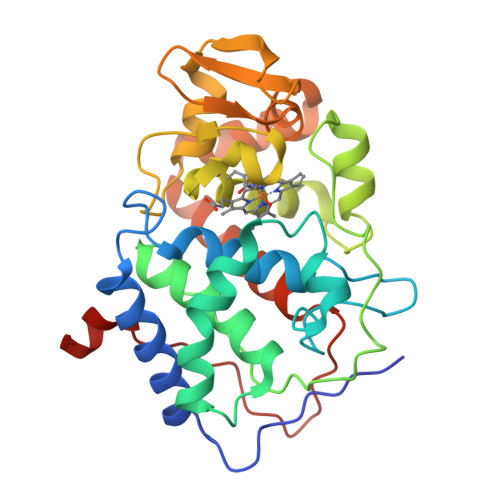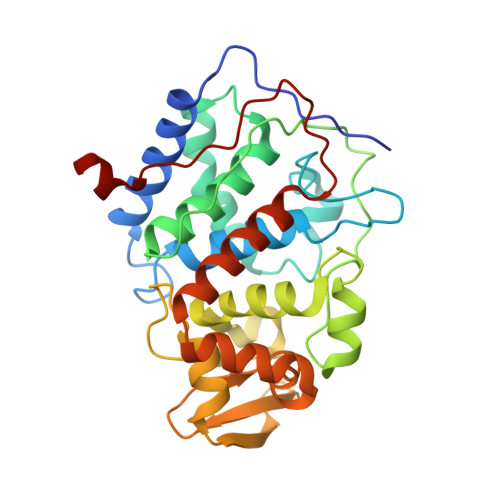A cation binding motif stabilizes the compound I radical of cytochrome c peroxidase.
Miller, M.A., Han, G.W., Kraut, J.(1994) Proc Natl Acad Sci U S A 91: 11118-11122
- PubMed: 7972020
- DOI: https://doi.org/10.1073/pnas.91.23.11118
- Primary Citation of Related Structures:
1CPD, 1CPE, 1CPF, 1CPG - PubMed Abstract:
Cytochrome c peroxidase reacts with peroxide to form compound I, which contains an oxyferryl heme and an indolyl radical at Trp-191. The indolyl free radical has a half-life of several hours at room temperature, and this remarkable stability is essential for the catalytic function of cytochrome c peroxidase. To probe the protein environment that stabilizes the compound I radical, we used site-directed mutagenesis to replace Trp-191 with Gly or Gln. Crystal structures of these mutants revealed a monovalent cation binding site in the cavity formerly occupied by the side chain of Trp-191. Comparison of this site with those found in other known cation binding enzymes shows that the Trp-191 side chain resides in a consensus K+ binding site. Electrostatic potential calculations indicate that the cation binding site is created by partial negative charges at the backbone carbonyl oxygen atoms of residues 175 and 177, the carboxyl end of a long alpha-helix (residues 165-175), the heme propionates, and the carboxylate side chain of Asp-235. These features create a negative potential that envelops the side chain of Trp-191; the calculated free energy change for cation binding in this site is -27 kcal/mol (1 cal = 4.184J). This is more than sufficient to account for the stability of the Trp-191 radical, which our estimates suggest is stabilized by 7.8 kcal/mol relative to a Trp radical in solution.
Organizational Affiliation:
Department of Chemistry, University of California at San Diego, La Jolla 92093-0317.


















